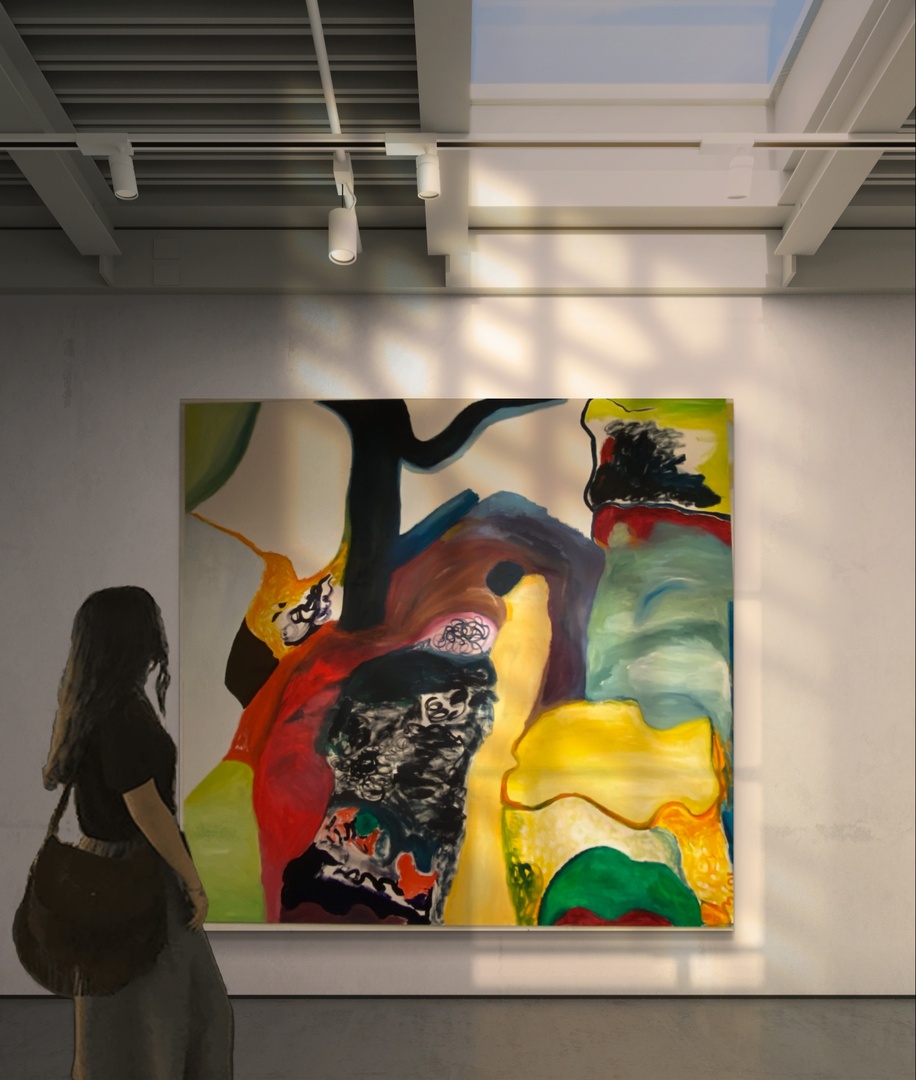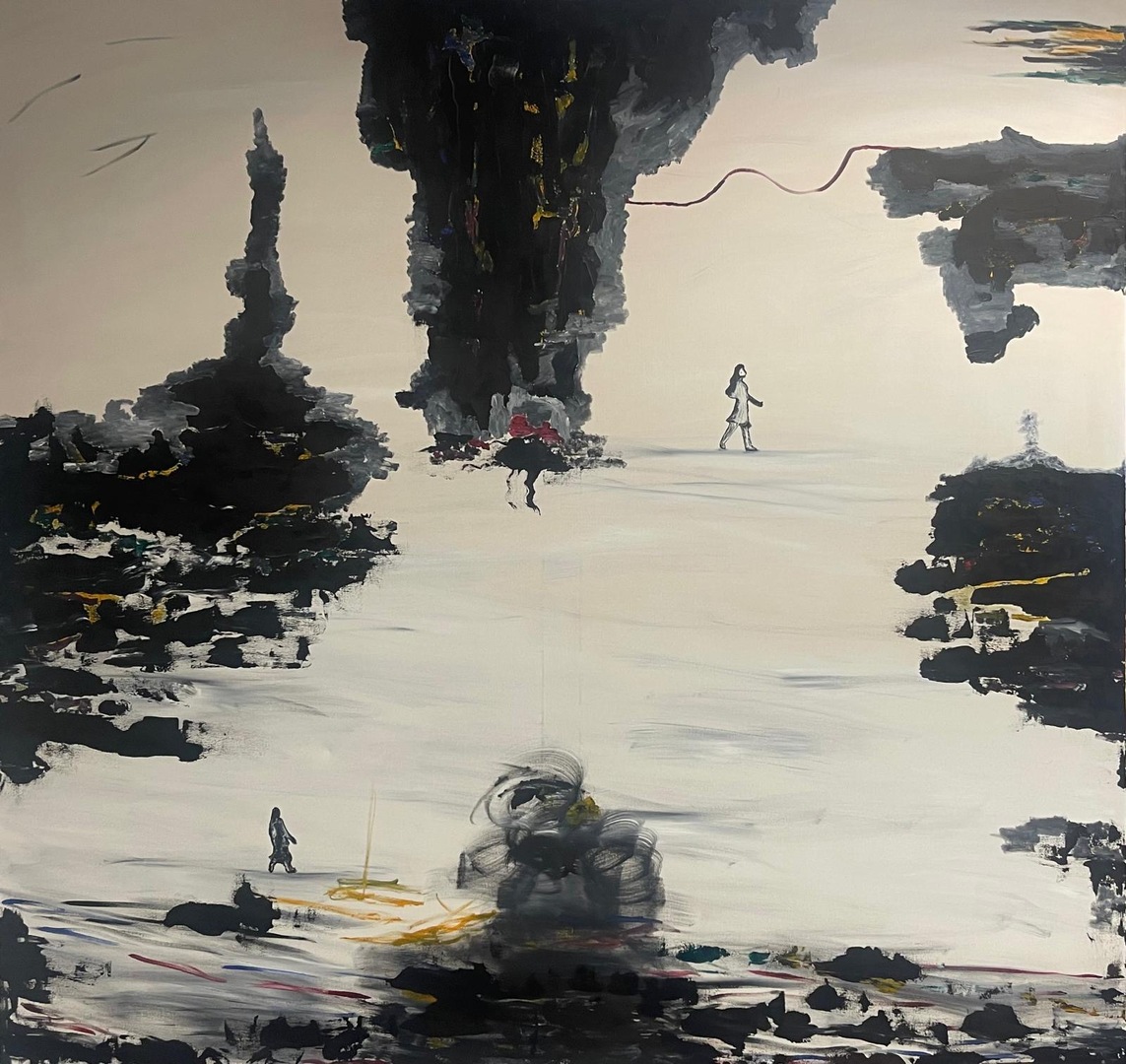Christelle Momini-Duthu - MFA Painting
NEUROSCIENCE
This work is the collaboration with Art, Science and Ecology
I realised this painting, for the use to serve as a visual metaphor for these two systems where individual components, whether neurons or ecological elements, contribute to a larger, dynamic whole that is constantly evolving and interacting. This kind of abstract painting resonates with both the organic complexity of the brain and the natural world.
This abstract painting, full of bold colours and dynamic shapes, can be interpreted in connection to both neuroscience and ecology through various conceptual lenses:
For Neuroscience Interpretation:
The painting’s swirling lines, contrasting colours, and overlapping forms evoke a sense of fluidity and complexity, which can be connected to the brain's neural networks. In neuroscience, the brain is often described as a complex web of connections, where information flows in dynamic patterns. The use of vibrant colours could represent different neural signals, emotions, or cognitive states interacting within the mind. For example:
- Black swirling patterns:
Might symbolize areas of intense cognitive processing, perhaps representing how thoughts can become chaotic or tangled in certain emotional states.
- Red and yellow sections:
Could indicate heightened activity, potentially connecting to the brain's limbic system, where emotional processing takes place.
- The soft gradients and transitions between colours may be reminiscent of synaptic plasticity the brain's ability to reorganize and create new connections, adapting to experiences.
From a broader perspective, abstract art like this often reflects the idea of how the brain perceives the world, filtering through subjective emotions, memories, and unconscious associations, much like how we perceive abstract forms in daily life.
Ecological Interpretation:
On the other hand, this piece can also be interpreted ecologically.
The forms and colours seem to suggest an abstract representation of landscapes, vegetation, and natural cycles.
For instance:
- The black tree-like form:
At the top could symbolize a connection to nature, representing the interaction between humans and ecological systems.
- Green and yellow areas:
Could represent various landscapes or biomes perhaps forests, grasslands, or fields of crops, indicating a blending of natural forms.
- The mix of colours may also symbolize the interconnectedness of ecosystems.
For example, This work is the collaboration with Art, Science and Ecology
I realised this painting, for the use to serve as a visual metaphor for these two systems where individual components, whether neurons or ecological elements, contribute to a larger, dynamic whole that is constantly evolving and interacting. This kind of abstract painting resonates with both the organic complexity of the brain and the natural world.
This abstract painting, full of bold colours and dynamic shapes, can be interpreted in connection to both neuroscience and ecology through various conceptual lenses:
For Neuroscience Interpretation:
The painting’s swirling lines, contrasting colours, and overlapping forms evoke a sense of fluidity and complexity, which can be connected to the brain's neural networks. In neuroscience, the brain is often described as a complex web of connections, where information flows in dynamic patterns. The use of vibrant colours could represent different neural signals, emotions, or cognitive states interacting within the mind. For example:
- Black swirling patterns:
Might symbolize areas of intense cognitive processing, perhaps representing how thoughts can become chaotic or tangled in certain emotional states.
- Red and yellow sections:
Could indicate heightened activity, potentially connecting to the brain's limbic system, where emotional processing takes place.
- The soft gradients and transitions between colours may be reminiscent of synaptic plasticity the brain's ability to reorganize and create new connections, adapting to experiences.
From a broader perspective, abstract art like this often reflects the idea of how the brain perceives the world, filtering through subjective emotions, memories, and unconscious associations, much like how we perceive abstract forms in daily life.
Ecological Interpretation:
On the other hand, this piece can also be interpreted ecologically.
The forms and colours seem to suggest an abstract representation of landscapes, vegetation, and natural cycles.
For instance:
- The black tree-like form:
At the top could symbolize a connection to nature, representing the interaction between humans and ecological systems.
- Green and yellow areas:
Could represent various landscapes or biomes perhaps forests, grasslands, or fields of crops, indicating a blending of natural forms.
- The mix of colours may also symbolize the interconnectedness of ecosystems.
For example, the transition between the organic and non-organic could represent the flow of energy and matter through different ecological niches, where each element depends on the others for balance.
In both fields, “interconnectedness” is a key theme:
- “Neuroscience” deals with how various regions of the brain communicate and cooperate to create a unified experience of the world.
- “Ecology” examines how different organisms and elements of the environment interact to form ecosystems that support life. transition between the organic and non-organic could represent the flow of energy and matter through different ecological niches, where each element depends on the others for balance.
In both fields, “interconnectedness” is a key theme:
- “Neuroscience” deals with how various regions of the brain communicate and cooperate to create a unified experience of the world.
- “Ecology” examines how different organisms and elements of the environment interact to form ecosystems that support life.







